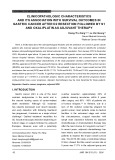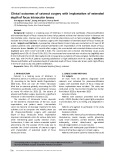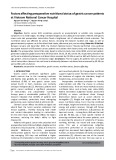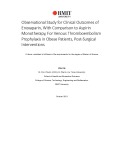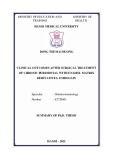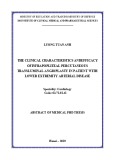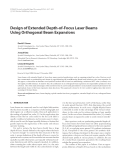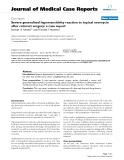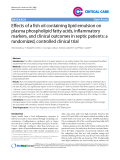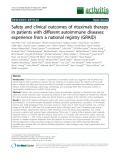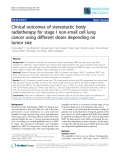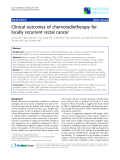
HUE JOURNAL OF MEDICINE AND PHARMACY ISSN 3030-4318; eISSN: 3030-4326
98
Hue Journal of Medicine and Pharmacy, Volume 14, No.6/2024
Clinical outcomes of cataract surgery with implantation of extended
depth of focus intraocular lenses
Tran Nguyen Tra My¹*, Duong Anh Quan², Tran Sy Thanh1
(1) Ophthalmology Dept., Hue University of Medicine and Pharmacy, Hue University
(2) Opthalmology Centre, Hue Central Hospital
Abstract
Background: Cataract is a leading cause of blindness in Vietnam and worldwide. Phacoemulsification
with extended depth of focus intraocular lenses helps patients achieve their desired vision in distance and
intermediate vision, improve near vision, and minimize phenomena such as halos and glare. Objectives: To
evaluate the clinical outcomes of cataract surgery with implantation of extended depth of focus intraocular
lenses. Subjects and Methods: A prospective interventional clinical study was conducted on 57 eyes of 50
cataract patients who underwent phacoemulsification with implantation of the extended depth of focus
intraocular lenses. Results: At 3 months after surgery, the uncorrected and corrected distance visual acuity
(logMAR) were 0.07 ± 0.07 and 0.06 ± 0.06; The uncorrected and corrected intermediate visual acuity
(logMAR) were 0.26 ± 0.12 and 0.25 ± 013; The uncorrected and corrected near visual acuity (logMAR) were
0.55 ± 0.20 and 0.54 ± 0.19; Most patients did not experience symptoms of halos and glare. Satisfaction rates
were high, with 94.7% of patients reporting satisfaction or high satisfaction with the surgery. Conclusion:
Phacoemulsification with extended depth of extended depth of focus intraocular lenses yields high efficacy
in terms of visual acuity and patient satisfaction.
Keywords: Phaco, IOL, EDOF (extended depth of focus), cataract.
Corresponding Author: Tran Nguyen Tra My. Email: tntmy.mat@huemed-univ.edu.vn
Received: 26/4/2024; Accepted: 10/10/2024; Published: 25/12/2024
DOI: 10.34071/jmp.2024.6.14
1. INTRODUCTION
Cataract is a leading cause of blindness in
Vietnam as well as in numerous countries worldwide
[1]. According to the World Health Organization’s
2020 data, there are over 20 million individuals
blind due to cataracts globally, accounting for 51%
of blindness worldwide, with an estimated increase
to nearly 40 million by 2025 [2]. The advent of
phacoemulsification surgery represents a significant
milestone in the treatment of cataracts [3].
The selection of intraocular lenses depends
on the biometric characteristics of the eye, visual
expectations, and patient needs. Intermediate
vision has become increasingly important for daily
activities such as computer and mobile phone use
[4]. Phacoemulsification surgery with extended
depth of focus intraocular lenses implantation
improves intermediate vision for various daily tasks
while maintaining good quality distance vision.
Furthermore, it does not induce unwanted optical
phenomena. [5]. The purpose of this study was to
evaluate the clinical outcomes of cataract surgery
with implantation of extended depth of focus
intraocular lenses.
2. SUBJECTS AND METHODS
2.1. Subjects
57 eyes from 50 patients diagnosed with
cataracts and indicated for phacoemulsification
surgery with extended depth of focus intraocular
lenses implantation were included. This study was
conducted at the Hue Central Hospital Eye Center
from March 2023 to November 2023.
Inclusion criteria:
Patients with cataracts presented with visual
acuity < 20/25 (Snellen chart), good light perception
in all directions, IOP ≤ 21 mmHg, and astigmatism <
1 D.
Patients who agreed to participate in the study
and were cooperative.
Exclusion criteria:
Patients with a history of ocular diseases affecting
transparency, severe myopia, uveitis, glaucoma,
optic nerve disorders, corneal diseases, diabetic
retinopathy, retinal detachment, age-related
macular degeneration, or ocular trauma.
Patients with inadequate pupil dilation (< 4mm),
history of refractive surgery or corneal surgery.
Patients with severe systemic diseases that could






